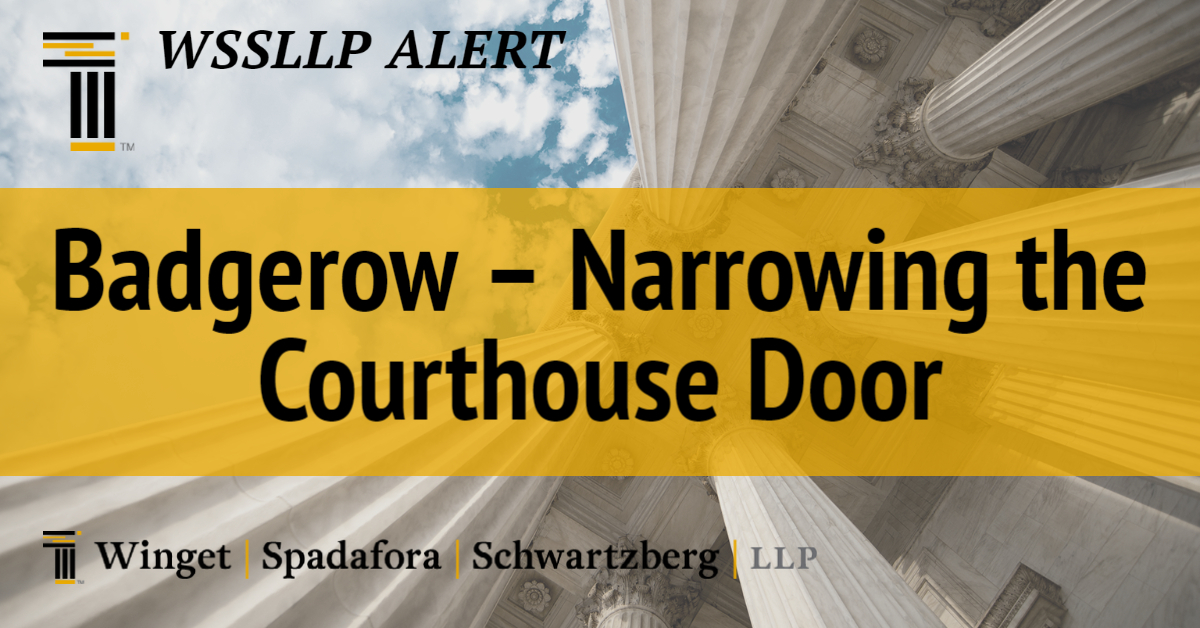On March 31, 2022, in an 8-1 decision, the United States Supreme Court in Badgerow v. Walters, __ S. Ct. __, 2022 WL 959675 (March 31, 2022) sharply curtailed litigants’ ability to confirm or vacate an arbitration award in Federal Court. The Supreme Court held that the “look through” provisions in Section 4 of the Federal Arbitration Act (“FAA”), which applies to proceedings to compel arbitration and allows district courts to look at the underlying dispute, did not apply to Sections 9 and 10, which address proceedings to vacate and confirm arbitration awards.
The underlying dispute in Badgerow involved a claim of wrongful termination brought by Denise Badgerow against her former employers. Ms. Badgerow asserted that the termination violated both Federal and state law. When she lost in arbitration she commenced an action in Louisiana state court to vacate the award. The defendants removed the case to the Eastern District Court of Louisiana and sought to confirm the award under Section 9 of the FAA. Badgerow then moved to remand the case back to Louisiana state court, arguing that the District Court lacked jurisdiction over the motions to vacate and confirm the award.
The District Court, citing to the Supreme Court’s prior decision in Vaden v. Discover Bank, 556 U.S. 49 (2009) applied a “look through” approach to determine jurisdiction. In Vaden, the Supreme Court held that in connection with petitions to compel arbitration under Section 4 of the FAA, a federal district court could “look through” to the underlying dispute to see if there was an independent basis for federal jurisdiction either through diversity or federal question. Thus, the District Court, seeing that federal employment statutes were raised in the underlying arbitration, held that it had an independent jurisdictional basis to rule on the competing motions to vacate or confirm. The District Court’s holding was affirmed by the United States Court of Appeals for the Fifth Circuit, 975 F. 3d 469 (5th Cir. 2020).
The Supreme Court reversed. In writing for the majority, Justice Kagan differentiated the language in Section 4 of the FAA versus the language in FAA Sections 9 and 10. Justice Kagan noted that Section 4 applies to cases where “the District Court would have jurisdiction but for the arbitration agreement” and that Sections 9 and 10 do not contain the same language. Thus, the Court held that the “look through” analysis utilized for Section 4 cannot be utilized for Sections 9 and 10.
The practical effect of this is that in order for litigants to confirm or vacate an arbitration award, jurisdiction must be apparent on the face of the petition. If the litigants are citizens of different states and the award is more than $75,000, then the district court would have jurisdiction. However, an award involving the citizens of the same state must be heard by a state court. Even if the underlying claims involve federal questions, the district court would not have jurisdiction to confirm/vacate and such proceedings must be brought in state court. In sum, the number of petitions to confirm/or vacate an arbitration award that can be heard by a federal court are now far fewer.
Winget Spadafora & Schwartzberg, LLP has been closely following the Badgerow decision and the impact on its clients. A link to the Badgerow decision is set forth below at https://www.supremecourt.gov/opinions/21pdf/20-1143_m6hn.pdf






